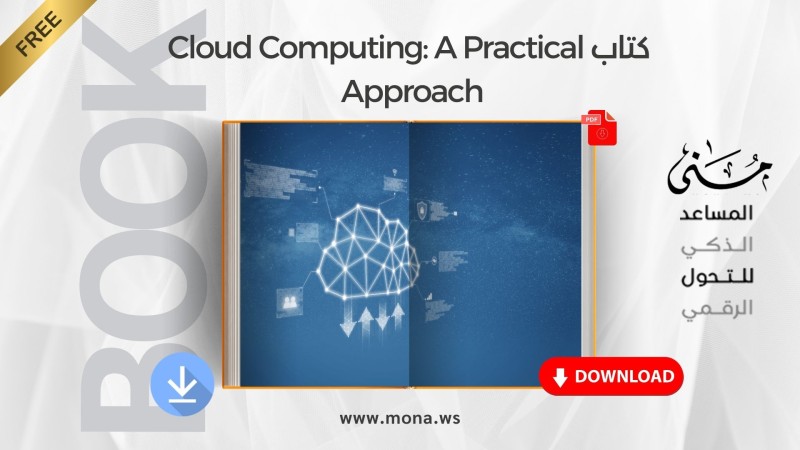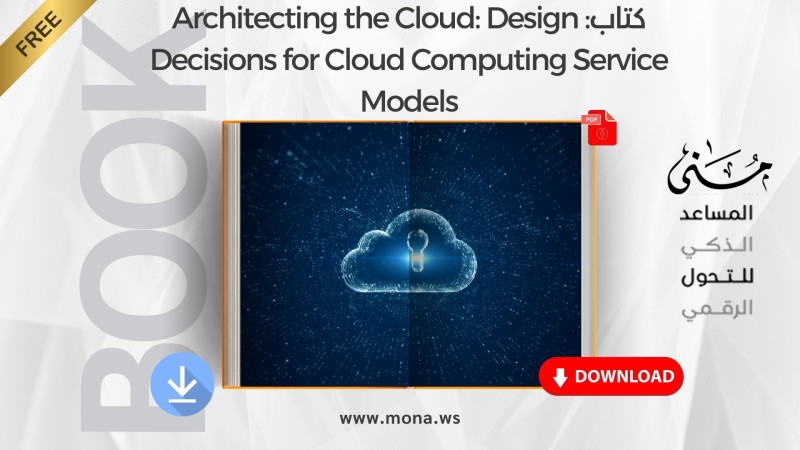Cloud Computing Fundamentals for Front-End Developers book summary
Written by: Ali Hammad
In the ever-changing world of front-end development, it's essential for every developer to possess a modern set of skills that keep pace with the job market. One of the most important skills is cloud computing fundamentals for front-end developers. This book provides a practical and simplified introduction to understanding these fundamentals, helping front-end developers advance their professional and technical skills.
Author Ali Hammad specifically targets beginners and recent graduates, focusing on making the fundamentals of cloud computing easy to understand and quick to apply for front-end developers. He doesn't delve into theoretical complexities, but rather provides a concise summary of the information and skills developers need to be ready for the job market.
What is cloud computing?
To understand the basics of cloud computing for front-end developers, we must first clarify the concept of cloud computing itself. It is simply a model that allows access to digital resources such as servers, databases, storage, and networks over the internet, without the need to manage them locally. This model saves time, reduces costs, and increases flexibility in resource use.
The book provides an illustrative example: Instead of purchasing and maintaining physical servers, with cloud computing you can use virtual servers for a monthly fee. This is the essence of cloud computing fundamentals for front-end developers, as it helps developers focus on building the front-end without worrying about infrastructure.
Why is cloud computing important for front-end developers?
Some may think that front-end developers have nothing to do with infrastructure or back-end operations, but the reality is that the modern work environment requires developers to be familiar with the basics of cloud computing for front-end developers, as it enables them to:
- Understand how to upload applications to the cloud.
- Dealing with file hosting systems.
- Connecting the front end to back end services in the cloud.
Understanding the basics of cloud computing gives developers a more comprehensive view of the application lifecycle and increases their ability to work within integrated teams.
Types of cloud computing services
To understand the cloud services architecture, the book introduces three main models that form an essential part of cloud computing fundamentals for front-end developers:
SaaS (Software as a Service)
Ready-made applications that are used online without the need for installation or maintenance.
example:Google Docs, Netflix.
PaaS (Platform as a Service)
A complete development environment that allows you to build and run applications without worrying about hardware.
example:Heroku, Azure.
IaaS (Infrastructure as a Service)
It provides computing resources such as servers and storage but requires manual setup by the user.
example:AWS, DigitalOcean.
The book also refers to the technique ofServerless, a modern approach for front-end developers to develop applications without managing servers, is an important part of cloud computing fundamentals for front-end developers.
What are the types of clouds?
Within the basics of cloud computing, a distinction must be made between the types of clouds available:
public cloud: Shared between multiple clients, fully managed by the service provider (e.g.AWS).
Private cloud: Dedicated to a single organization and managed internally or by a third party.
Hybrid Cloud:It combines public and private, providing great flexibility.
Multi-vendor cloudUse services from multiple providers to increase availability and distribute tasks.
Each of these types plays a role in building cloud-based applications for front-end developers, providing developers with multiple options for scalability and stability.
Security in Cloud Computing
Security is an essential element of cloud computing. While the service provider bears a significant portion of the responsibility for protecting the infrastructure, data protection remains the user's responsibility. Therefore, the author recommends the following:
- Encrypt data before transmission and storage.
- Intelligently manage access and define user permissions.
- Monitor operations and compliance to ensure no information leaks.
Following these guidelines is a vital part of understanding and applying cloud computing fundamentals for front-end developers in a practical and secure manner.
IBM Cloud as a learning example
The writer chose the platformIBM Cloud is a training platform because it's easy to use and suitable for beginners. IBM Cloud also offers many of the services any front-end developer would need.
There are other excellent platforms, such as Docsuite. This platform represents an excellent opportunity for front-end developers to apply cloud computing fundamentals through real-world projects.
Despite its fameAWS, however, IBM Cloud and Docsuite offer a more seamless experience for front-end developers who want to gradually learn cloud deployment.
Cloud computing fundamentals are not a luxury, but a practical necessity in a time when everything is connected to the cloud. Today's successful developer understands how to build, deploy, secure, and integrate with modern operating environments.
Cloud Computing Fundamentals for Front-End Developers isn't meant to turn you into a cloud engineer. Rather, it provides a comprehensive and simple overview of how cloud computing impacts your work as a front-end developer. With repeated experience, you'll gain greater confidence and be able to build professional applications that meet market demands, using Cloud Computing Fundamentals for Front-End Developers in a practical way.
You can download the Cloud Computing Fundamentals for Front-End Developers book directly from here.
 يمكنك تحميل كتاب أساسيات الحوسبة السحابية لمطوري الواجهات مباشرةً من هنا.
يمكنك تحميل كتاب أساسيات الحوسبة السحابية لمطوري الواجهات مباشرةً من هنا.










Comments
Add New Comment